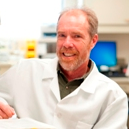Bioactive Compounds from Marine Microbes
A special issue of Marine Drugs (ISSN 1660-3397).
Deadline for manuscript submissions: closed (30 November 2014) | Viewed by 306427
Special Issue Editor
Interests: natural products chemistry; chemical biology of natural products; NMR spectroscopy
Special Issues, Collections and Topics in MDPI journals
Special Issue Information
Dear Colleagues,
The marine environment is a vast and largely unexplored resource for accessing diverse communities of microorganisms with novel biosynthetic capabilities. Marine habitats provide unique conditions for microbial growth and secondary metabolite expression that are not found in terrestrial ecosystems. The co-evolution of many marine macroorganisms, particularly invertebrate animals, with these microbes has often lead to the development of very close associations or symbiotic relationships between the host organism and a specific microbe. This in turn has resulted in the development and elaboration of unique microbial biosynthetic pathways and capabilities that can be utilized to generate novel compounds. Marine sediments are also now recognized as a rich source of microbial taxonomic diversity and new biologically active compounds. Efforts to cultivate and evaluate marine microorganisms and the associated compounds they can produce have expanded significantly in recent years, but this are of study is still very much in its infancy considering the vastness of the marine environment and the different types of microbial habitats found there.
Kirk R. Gustafson Ph. D.
Guest Editor
Keywords
- actinomycetes
- bacteria
- biosynthesis
- dereplication
- fungi
- metabolic modulators and elicitors
- micro algae
- quorum sensing
- symbionts
Benefits of Publishing in a Special Issue
- Ease of navigation: Grouping papers by topic helps scholars navigate broad scope journals more efficiently.
- Greater discoverability: Special Issues support the reach and impact of scientific research. Articles in Special Issues are more discoverable and cited more frequently.
- Expansion of research network: Special Issues facilitate connections among authors, fostering scientific collaborations.
- External promotion: Articles in Special Issues are often promoted through the journal's social media, increasing their visibility.
- Reprint: MDPI Books provides the opportunity to republish successful Special Issues in book format, both online and in print.
Further information on MDPI's Special Issue policies can be found here.






